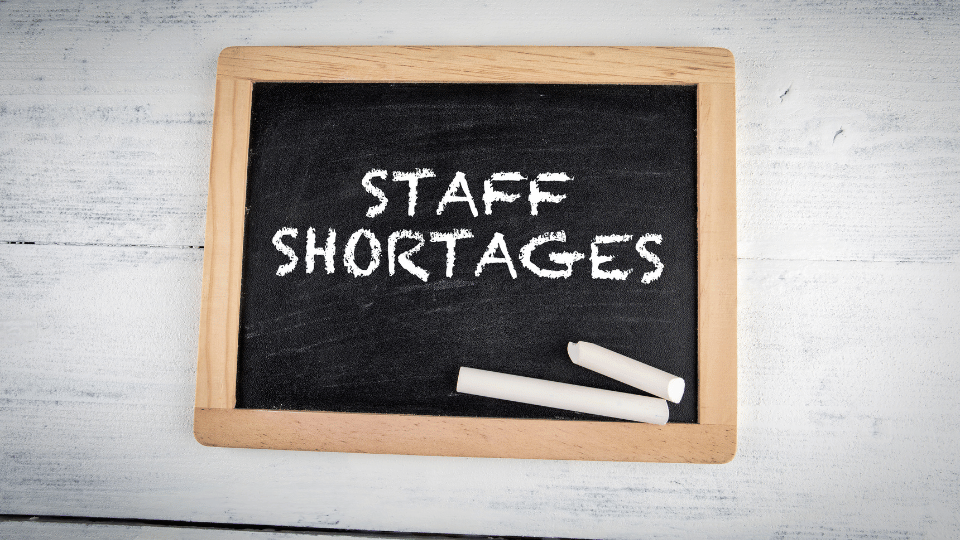The Cost of Talent Shortages in Aviation: Impact on Productivity & Profitability

In recent years, the aviation industry has been facing a growing talent crisis, particularly in the realms of skilled labor such as pilots, aircraft mechanics, and avionics technicians. The term "pilot shortage crisis" has become a buzzword, but the issue extends far beyond the cockpit. As the demand for air travel increases, the need for qualified personnel to maintain aircraft and ensure safety is more critical than ever. This demand is driven by the expansion of airline routes, the introduction of new aircraft technologies, and increased regulatory requirements for safety and maintenance.
The shortage of skilled labor is not just about numbers; it's about expertise. Aircraft mechanics and avionics technicians require specialized training and a deep understanding of complex systems to keep aircraft operational and safe. As more airlines expand their fleets and introduce sophisticated aircraft, the demand for these skilled professionals only intensifies. Despite the industry's efforts to recruit and train new talent, the gap between supply and demand continues to widen, threatening the industry's ability to maintain its growth trajectory.
The Scope of the Problem
According to the Boeing Pilot & Technician Outlook, the industry will require 739,000 new maintenance technicians over the next 20 years. This staggering figure highlights the urgent need for recruitment and training initiatives to fill these roles. The current workforce is aging, and the rate of new entrants is insufficient to meet the demand, creating a significant gap. The challenge is further compounded by the retirement of experienced personnel, which not only reduces the workforce size but also leads to a loss of invaluable institutional knowledge.
This talent shortage is not confined to any single region but is a global issue affecting developed and developing markets alike. Countries with emerging aviation markets are particularly hard-hit, as they struggle to develop the infrastructure and training programs needed to support rapid growth. In mature markets, the challenge lies in keeping pace with technological advancements and regulatory changes, which require continuous upskilling of the workforce. This global scope of the problem necessitates collaborative solutions that transcend national boundaries.
Factors Contributing to the Shortage
Several factors contribute to the talent shortages in aviation. One major issue is the competition from other industries, particularly those offering better pay and work-life balance. As industries such as technology and healthcare continue to grow, they attract potential talent away from aviation with promises of more favorable working conditions and career advancement opportunities. Additionally, the extensive training and certification processes required for aviation roles can deter potential candidates, who may opt for careers with lower entry barriers.
The COVID-19 pandemic further exacerbated the situation, leading to layoffs and a temporary reduction in training programs. Many experienced professionals left the industry during this time, seeking stability in other sectors. The pandemic also disrupted the pipeline of new talent, as educational institutions faced challenges in delivering hands-on training. Furthermore, the perception of the aviation industry as volatile and susceptible to global disruptions has deterred new entrants, making it more challenging to attract and retain skilled workers.
Impact on Productivity and Profitability
 The talent shortage in aviation affects both productivity and profitability, creating a cascade of challenges for the industry. The lack of skilled personnel not only slows down routine operations but also hampers the industry's ability to innovate and adapt to changing market demands. As airlines and maintenance organizations grapple with these shortages, they face increasing pressure to find solutions that maintain operational efficiency and profitability.
The talent shortage in aviation affects both productivity and profitability, creating a cascade of challenges for the industry. The lack of skilled personnel not only slows down routine operations but also hampers the industry's ability to innovate and adapt to changing market demands. As airlines and maintenance organizations grapple with these shortages, they face increasing pressure to find solutions that maintain operational efficiency and profitability.
Productivity Loss
The shortage of skilled workers leads to increased workloads for existing staff, resulting in burnout and decreased efficiency. Maintenance delays become more frequent, impacting flight schedules and causing a ripple effect throughout airline operations. As aircraft sit grounded, airlines face significant financial losses, not to mention the dissatisfaction of passengers dealing with delays and cancellations. This loss of productivity also affects the industry's ability to meet regulatory requirements, as maintenance backlogs can lead to compliance issues and safety risks.
The impact on productivity is not just about delayed flights; it's about the industry's capacity to grow and innovate. With limited manpower, airlines and maintenance organizations are forced to prioritize immediate operational needs over long-term strategic initiatives. This focus on short-term solutions can stifle innovation and limit the industry's ability to adapt to evolving market trends, such as the push for more sustainable and environmentally friendly aviation practices.
Financial Consequences
From a financial perspective, the cost of talent shortages in aviation is immense. Airlines are forced to offer higher salaries and incentives to attract and retain skilled workers, driving up operational costs. Moreover, the lack of sufficient personnel can lead to increased outsourcing of maintenance tasks, which often comes with a hefty price tag. This combination of factors erodes profit margins and hampers the industry's ability to invest in future growth. The financial strain is further exacerbated by the need to invest in new technologies and infrastructure to support expanding operations.
The financial implications extend beyond immediate costs. As airlines struggle to maintain profitability, they may face challenges in securing financing for fleet expansion and modernization. This can limit their ability to compete in a rapidly evolving market and delay the adoption of new technologies that could enhance operational efficiency. In the long term, the financial burden of talent shortages could hinder the industry's capacity to meet growing consumer demand and adapt to regulatory changes.
Addressing the Talent Shortage
To mitigate the impact of talent shortages, the aviation industry must adopt a multifaceted approach that addresses both immediate needs and long-term sustainability. This involves not only attracting new talent but also retaining and developing the existing workforce to ensure that the industry is equipped to meet future challenges. By taking a proactive stance, the industry can create a resilient talent pipeline that supports its growth and innovation objectives.
Enhancing Recruitment Strategies
 Aviation companies need to rethink their recruitment strategies to attract a diverse pool of candidates. This includes expanding outreach efforts to underrepresented groups, offering competitive compensation packages, and highlighting the growth opportunities within the industry. Building partnerships with educational institutions can also help establish a pipeline of talent by providing students with exposure to aviation careers early on. By showcasing the dynamic and impactful nature of aviation careers, companies can attract individuals who are passionate about making a difference in this field.
Aviation companies need to rethink their recruitment strategies to attract a diverse pool of candidates. This includes expanding outreach efforts to underrepresented groups, offering competitive compensation packages, and highlighting the growth opportunities within the industry. Building partnerships with educational institutions can also help establish a pipeline of talent by providing students with exposure to aviation careers early on. By showcasing the dynamic and impactful nature of aviation careers, companies can attract individuals who are passionate about making a difference in this field.
In addition to traditional recruitment methods, leveraging digital platforms and social media can enhance the industry's ability to reach potential candidates. Virtual career fairs and online networking events can connect employers with a wider audience, breaking down geographical barriers and attracting talent from diverse backgrounds. By creating a compelling employer brand that emphasizes innovation, diversity, and growth opportunities, aviation companies can position themselves as employers of choice in a competitive job market.
Investing in Training and Development
Investing in comprehensive training and development programs is crucial to addressing skill gaps in aerospace. By offering apprenticeships and on-the-job training, companies can equip new entrants with the skills needed to excel in their roles. This not only helps bridge the talent gap but also fosters employee loyalty and reduces turnover rates. Ongoing professional development opportunities can keep the workforce engaged and prepared for the evolving demands of the industry.
In addition to technical skills, training programs should focus on developing soft skills such as communication, teamwork, and problem-solving. These competencies are essential for navigating the complex challenges of the aviation industry and enhancing overall operational effectiveness. By fostering a culture of continuous learning and growth, companies can build a workforce that is adaptable, resilient, and capable of driving innovation.
Leveraging Technology
The advent of technology offers new opportunities for improving recruitment and training processes. Virtual reality (VR) and augmented reality (AR) can be used to simulate real-world scenarios for training purposes, providing hands-on experience without the associated risks. These technologies can enhance the learning experience, making training more engaging and effective. Additionally, leveraging data analytics can help identify trends and predict future workforce needs, allowing companies to proactively address potential shortages.
Technology can also streamline recruitment processes, making it easier to identify and engage with qualified candidates. Artificial intelligence (AI) can be used to assess candidate suitability and match skills with job requirements, reducing the time and resources needed for recruitment. By embracing technological advancements, the aviation industry can enhance its talent management strategies and build a future-ready workforce.
The Road Ahead
The aviation industry must take proactive steps to address the talent shortage and its impact on productivity and profitability. By implementing robust recruitment strategies, investing in training programs, and embracing technological advancements, the industry can build a resilient workforce capable of meeting future demands. Collaboration between industry stakeholders, educational institutions, and governments will be key to developing comprehensive solutions that address the root causes of talent shortages.
For aspiring aircraft technicians, understanding the dynamics of employment in the aviation industry and the scope of growth opportunities is essential. With the right skills and training, a career in aviation offers not only stability but also the chance to be at the forefront of a rapidly evolving industry. Opportunities for specialization and career advancement abound, making aviation an attractive choice for those seeking a dynamic and impactful career path.
For aviation industry reporters, providing clear, engaging, and well-researched articles is vital in highlighting the challenges and opportunities within the field. By shedding light on the nuances of the aviation job market, reporters can contribute to a greater understanding of the industry's needs and potential solutions. This awareness can drive public and private sector efforts to address talent shortages and support the industry's growth.
Finally, for aviation hiring managers, partnering with recruitment experts who understand the unique demands of the industry is crucial. By securing vetted candidates quickly and efficiently, hiring managers can ensure that their organizations remain competitive and capable of weathering the challenges posed by talent shortages. Building strong relationships with training providers and industry associations can also enhance recruitment efforts and support workforce development initiatives.
In conclusion, the cost of talent shortages in aviation extends beyond financial implications. It impacts the industry's ability to innovate, grow, and provide the high level of service that passengers expect. By addressing these challenges head-on, the aviation industry can secure a prosperous future for both its workforce and its stakeholders. A concerted effort to tackle talent shortages will enable the industry to maintain its critical role in the global economy and continue to drive progress and innovation in the years to come.
